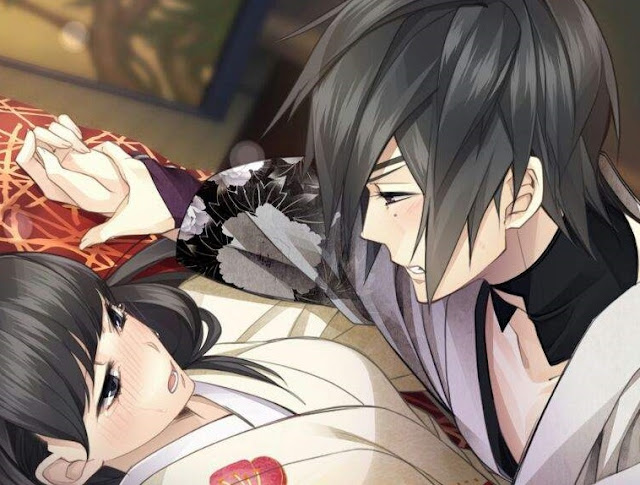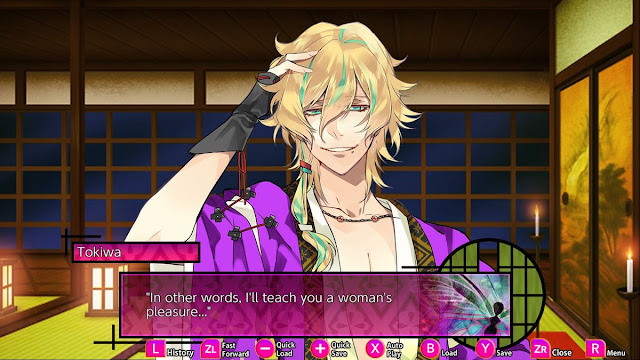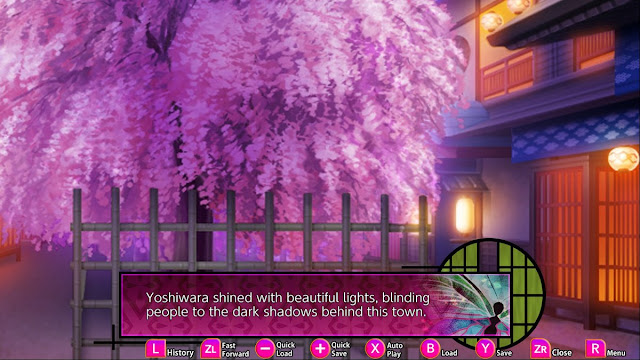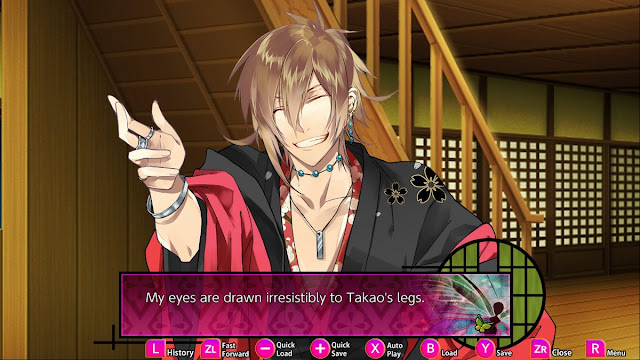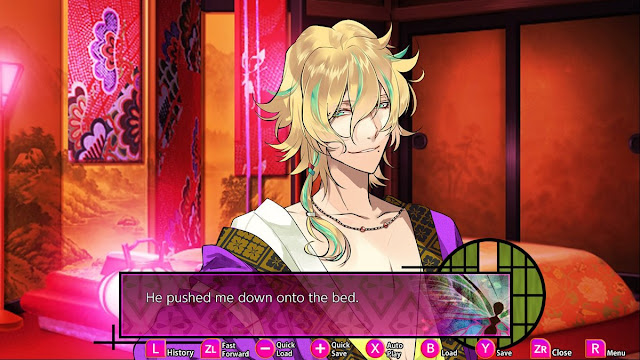Review by Matt S.
Japan’s political and social relationship with sex and sexuality has traditionally been far different to how it has developed in the west. Largely free of the three religions “of the book” that are terrified of and vilify sexuality (Christianity, Judaism and Islam), Japan has developed differently, and this is particularly true of the period when Japan’s borders were closed to the west and thus completely free of western hostility to sexuality.
In Japan, prostitution was legal. It was highly restricted, to specific, dedicated red light districts, but that was because political leaders were concerned that, as places people could gather that respected discretion, brothels were places that could lead to political intrigue. The restriction was not of a concern for morality. Indeed, the courtesans of Japan through this period that would work in these brothels – oiran – did so quite openly, and often became celebrities, set fashion trends, and were very publicly bought out of their contracts by the rich lords to become concubines or second wives (more on that shortly). They also weren’t straightforward sex workers in the strictest sense, but also singers, dancers, and entertainers (straight sex workers were termed yūjo, and didn’t have the respect the oiran commanded, though there still wasn’t the cultural hostility towards them as in other places).
There was a rigid hierarchy, too, with oiran competing with one another to become the top of their field. Generally, young girls were indentured to a brothel when they were around ten to twelve by their parents. They would then become apprenticed to an oiran (a top-ranking one, if they were lucky), and would perform various duties to help maintain the brothel. Then, once they were of age (14 to 16, when they would find someone with enough money to pay the exorbitant cost of being their first customer), they would become oiran themselves, and start to work their own way up the ranks.
All of this was effectively slavery. Girls were generally indentured on contracts for ten or so years, but the costs that they would rack up through those years, for being provided lodging, food, (obscenely expensive and fashionable) kimonos and training, was far outpaced by their earnings and left them in ever-increasing debt to the brothel owner. The lucky ones would convince a really wealthy patron to fall in love with them, and he would then buy them out of their contract by paying off their debt. That would effectively then leave them indentured to whoever that wealthy patron was, which was, again, slavery. But they tended to be better off – and even wield as much power within the family as the actual wife – than those oiran who would spend their entire lives in the red light district, where STDs – particularly syphilis, was common.
Still, despite all of this, the red light districts were a boom industry. Just one of them – Yoshiwara in Edo (now Tokyo) – at one point “employed” over 9,000 women. There was no shame for men to visit these “floating worlds,” which worked so hard to provide the perception of an escape from reality. As long as you could afford a trip to Yoshiwara in the first place, you were treated as an equal – whether lord, samurai, politician or merchant. It was designed as a dreamscape of pleasure and vice – a decadence and opulence unlike anything else that you could experience, and despite its exploitation and immorality in how the entire system around Yoshiwara treated women (not that these things were concerns back then), it, and other centres of pleasure, inspired great artists, writers and poets through its history.
Then, of course the west came, and Japan ended up banning prostitution (technically – it still goes on and is a very thinly veiled secret indeed). This stopped the exploitation of women (a good thing), but also put a stop to the gorgeous aesthetics and artistry of the areas themselves, led indirectly to the decline of the “legitimate” entertainers of the red light districts (the geisha, who contrary to western understanding, are not sex workers), and inserted a degree of puritanism into Japanese public life.
(And on a side note if you’re interested in a fairly unflinching look at the world of the Oiran, there’s an incredible film called Sakuran, which is based on a manga, and starring popular singer, Anna Tsuchiya. It’s a genuinely great film on the topic.)
This was an awfully long introduction to a review of The Men of Yoshiwara, I know, but it’s important to put the game, as a visual novel, in context. While it flips genders around – in this Yoshiwara, the men are the courtesans and you play as a woman patron of one (or all) of them, it is in every other way a depiction of the unique understanding of sexuality in Japan’s red light districts of old.
The aesthetics, for a start, are stunning. As I said, red light districts such as Yoshiwara were designed around creating a mystique of the “floating world”, and some of Japan’s most famous classical artists, such as Kitagawa Utamaro, and the great Hokusai himself, loved to depict these places and scenes through their work. That aesthetic is melded beautifully with more traditional anime art in The Men of Yoshiwara to create one of the most effective art styles I’ve seen in a visual novel yet. I’d go as far as to say it’s up there with Hakuoki, different as it is, and I do genuinely believe that is the most gorgeous visual novel of all.
The Men of Yoshiwara is billed as a “romance,” and naturally, given its content, it’s an otome designed to appeal to women. It also comes very much from the trashy Mills & Boon or 50 Shades of Grey school of “romantic literature for women” – smouldering men saying all the right things before taking charge in the bedroom. You also get to know the men intimately in terms of their personalities, desires and fears, and there’s some genuinely touching moments in there – for example, the half-foreigner who finds himself more comfortable in Yoshiwara because there his mixed blood gives him an exotic presence and competitive edge, whereas elsewhere he just experience racism.
It’s also written quite well, sitting on the edge of being erotic, while not going as far as the books I’ve described above. You certainly get a sense that developers of otome games take a very different approach to “romance” as those that provide “dating games” for men – where male-orientated dating games tend to be about the visual, with women (generally with impossibly oversized boobs) desperate to get “your” pants off, or at least get themselves into positions where their tiny skirts might as well not be there. Otome games, meanwhile, are much more about the characterisation and relationship. There’s still the payoffs in the end, but the process of getting there has a greater focus.
Which is why it’s a little disappointing that the localisation is of poor technical quality. I don’t have the original Japanese text to compare the quality of the translation itself (though it reads well enough, whatever has been done to it). The problem is that there are frequent examples of the text lacking spaces between two words, and other formatting irritations that really start to drag on the perception that this is a quality effort. It’s nothing that affects your ability to understand what’s going on, but it puts a dampener on the enjoyment of the reading, and for a visual novel, that’s a big deal.
There is a lot to the game, though, with a half dozen or so “stories” each broken up into fairly lengthy “chapters.” Visual novels do have a habit of being lengthy, but given this one’s price point I thought it would be a briefer affair. That’s not the case, it seems.
The Men of Yoshiwara is a really interesting little visual novel about the idea of the “floating worlds” of old Japan’s night life, the people that participated in them, and what people got up to there. You may well baulk at first at the idea of a game about “dating male prostitutes,” but really, this is a strong bit of storytelling that goes a long way to describe the differing understanding that Japan and the west have about what a sex worker is (or, at least, once was in Japan), and that makes it interesting. And, hell, it’s the first visual novel on the Nintendo Switch. It’s a perfect platform for those games, so it’s great to see we’re off with a bang.
– Matt S.
Editor-in-Chief
Find me on Twitter: @digitallydownld
 |
| Please Support Me On Patreon!
|

